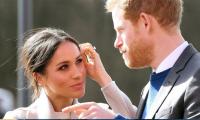The front cover of the 1982 American University of Beirut (AUB) yearbook features a black and white sketch of a campus building, foregrounded by a dozen colourful cut-and-pasted students. Some of them are sporting attire that is conspicuously from the 1980s; some are gathered around an orange juice vendor.
Open the yearbook to the first page, and the scene becomes decidedly less wholesome. An image of the main gate of AUB – emblazoned with the university’s motto in English and Arabic: “That they may have life and have it more abundantly” – is superimposed on a photograph of smoke rising from apartment buildings. The AUB Yearbook Committee explains in its introduction that, while they had intended to dedicate the book’s first 16 pages to the theme of the “reinstatement of student representation”, that plan had been derailed when, on June 4, Israel invaded and occupied Lebanon.
Lebanon was already seven years into its bloody civil war of 1975-90, but the Israeli invasion took it all to another level of savagery. The Israeli siege of ‘West Beirut’ – the reductionist wartime label assigned to the so-called ‘Muslim’ half of the Lebanese capital, where AUB is located – lasted from June to August of 1982, leaving residents without food, water, electricity, or fuel. The term ‘West Beirut’, the Yearbook Committee noted, had “become a by-word for the disastrous”.
And yet even ‘disastrous’ was an understatement, as is clear from the 16 pages of photos of air strikes, collapsed buildings, rubble, vehicles on fire, babies with bandaged heads, an elderly woman in a hospital bed, and a single hand lying on the ground detached from its body. The United States, naturally, had green-lighted the invasion.
I came across the 1982 yearbook the other day at the house of a friend of mine, an AUB alumnus, here in Beirut – where I unwittingly arrived just in time for the 40th anniversary of the Israeli invasion. Prior to the pandemic, I had been a regular visitor to the country since 2006 – incidentally the year of another Israeli invasion, when the Israeli army had similarly mocked the idea that people in Lebanon should “have life and have it more abundantly”.
The 1982 affair, which the Israeli government marketed as “Operation Peace for Galilee”, supposedly took place in retaliation for the attempted assassination of Shlomo Argov, Israel’s ambassador to Britain. Years later, the Guardian would dramatically observe: “Not since the slaying of Archduke Ferdinand in Sarajevo in 1914 has a hit team made war such a likely outcome”, providing as it did a “pretext” to Israel’s then-defence minister Ariel Sharon for his “long-planned campaign to eliminate” the PLO – the Palestine Liberation Organization headquartered in Beirut.
Never mind that the PLO condemned the assassination attempt – or that there never would have been a PLO in the first place had Israel not slaughtered 10,000 Palestinians and turned three-quarters of a million more into refugees in 1948.
In her Lebanese civil war memoir Beirut Fragments, Jean Said Makdisi – a Beirut-based Palestinian writer and scholar and the sister of the late Edward Said – recalls that, in the early days of “Peace for Galilee”, much was heard about Argov, the appointed casus belli. But such talk was ultimately short lived: “After a while nobody mentioned the ambassador anymore, until – several tens of thousands dead later; several hundred thousand refugees later; after large parts of Tyre, Sidon, Damour, and Beirut, not to mention dozens of other towns and villages had been destroyed – there was a small item in the newspaper that he had survived and been discharged from the hospital”.
Excerpted: ‘A ‘cosmic stink’: Israel’s invasion of Lebanon, 40 years on’.
Courtesy: Aljazeera.com
Data, today, defines how we make decisions with tools allowing us to analyse experience more precisely
But if history has shown us anything, it is that rivals can eventually unite when stakes are high enough
Imagine a classroom where students are encouraged to question, and think deeply
Pakistan’s wheat farmers face unusually large pitfalls highlighting root cause of downward slide in agriculture
In agriculture, Pakistan moved up from 48th rank in year 2000 to an impressive ranking of 15th by year 2023
Born in Allahabad in 1943, Saeeda Gazdar migrated to Pakistan after Partition







